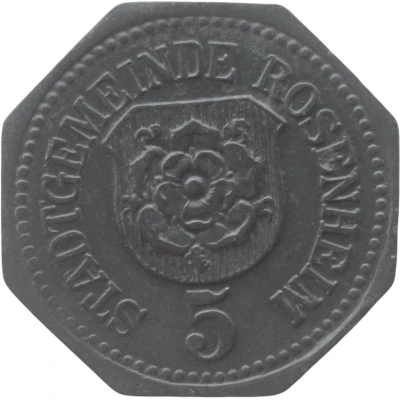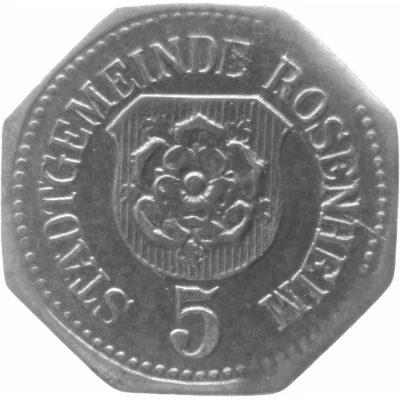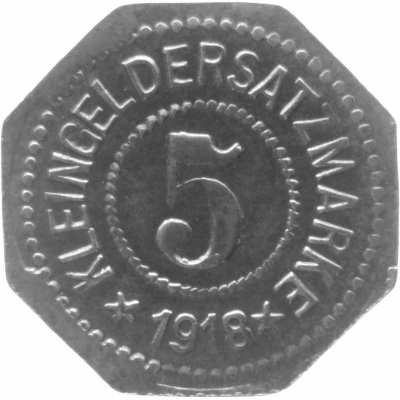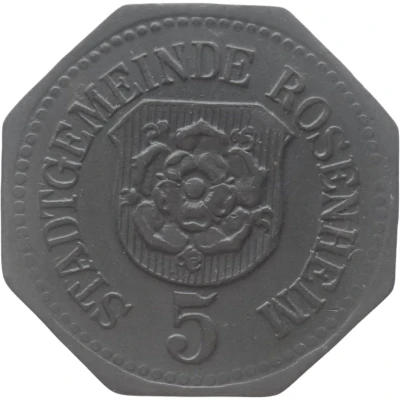
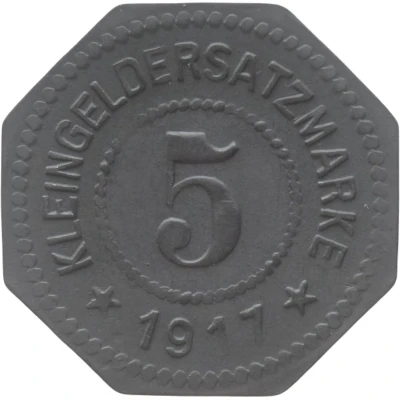

© Willem63 (CC BY-NC-SA)
5 Pfennigs - Rosenheim
1917 year| Zinc | 1.6 g | 19.3 mm |
| Issuer | City of Rosenheim (Federal state of Bavaria) |
|---|---|
| Emperor | William II (Wilhelm II) (1888-1918) |
| Type | Standard circulation coin |
| Year | 1917 |
| Value | 5 Pfennigs (5 Pfennige) (0.05) |
| Currency | Mark (1914-1924) |
| Composition | Zinc |
| Weight | 1.6 g |
| Diameter | 19.3 mm |
| Thickness | 1.2 mm |
| Shape | Octagonal (8-sided) |
| Technique | Milled |
| Orientation | Medal alignment ↑↑ |
| Demonetized | Yes |
| Updated | 2024-10-04 |
| Numista | N#30497 |
|---|---|
| Rarity index | 67% |
Reverse
Pearl rim, legend circling rope circle with denomination centered
Script: Latin
Lettering:
KLEINGELDERSATZMARKE
5
★ 1917 ★
Edge
Plain
Comment
Issuing body: [Stadt, Bayern].Interesting fact
The 5 Pfennigs - Rosenheim 1917 coin was minted during a time of economic turmoil in Germany, known as the "Inflationary Period" (1914-1923). During this time, the value of the German mark (the national currency) plummeted, and prices for everyday goods skyrocketed. As a result, many Germans turned to alternative forms of currency, such as local coins like the 5 Pfennigs - Rosenheim 1917, which were issued by cities and towns across the country. Despite being made of zinc, a relatively inexpensive metal, these coins were highly valued by the people of Rosenheim and surrounding areas, as they were seen as a more stable store of value than the rapidly depreciating national currency.
